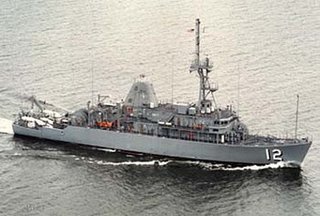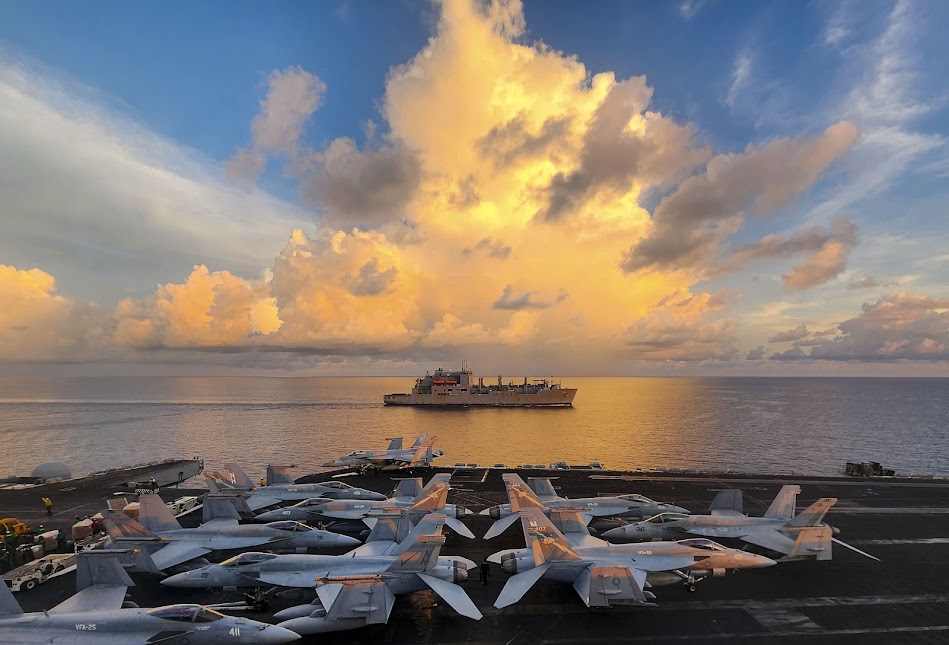
Reported at StrategyPage:
The growing potential for naval mine warfare by China, North Korea or Iran, or even terrorists, has caused the U.S. Navy to rethink its plan to retire its 14 Avenger-class minesweepers.I wonder how the AN/AQS-20A is progressing?
***
Now the thinking is more towards keeping the Avengers for as long as they are serviceable, and increasing the use of special mine clearing kits for the LCS and other ships. In a decade, it is believed hostile nations will have a lot of very capable naval mines.


How about Iran? See here and Iran and sea mines and some info related to the "law" of war and sea mines here.
UPDATE: Info on Chinese manufactured mines here (EM-52), here (M2) and here (M4).
Some older info (1998) on Russian sea mines here, with the delightful note: "Russian naval mines are unrivaled for their performance characteristics, reliability and ease of operation. Russian scientists and designers of virtually all classes of mines have captured the lead in their development."
And the North Koreans and the Iranians might have reason to believe in the efficacy of naval mines - as set out here:
During the Korean War enemy mines caused 70 percent of all U.S. Navy casualties and sank the only four U.S. naval vessels lost in combat. The Korean War showed clearly that in the future the sea mine would be the weapon of choice for many of the U.S. Navy's adversaries and a fixture of late 20th century naval warfare.And more here:
Since the beginning of the Cold War, at least 14 U.S. ships, including two in the last decade alone, have been damaged or sunk by mines during relatively small-scale mining operations. Four dated, low-technology mines - two of which were simple moored contact mines - caused hundreds of millions of dollars in damage to U.S. warships during both the Gulf Tanker War of the late 1980s and the 1991 Gulf War, and cost multinational forces tens of millions of dollars to counter them. In 1988, in the most serious incident, Samuel B. Roberts (FFG-58) nearly sank after striking an Iranian SADAF-02 contact mine, estimated to cost $1,500, causing nearly $96 million in damages.Effects? Here's a report of aid delivery being slowed during the early phases of the Iraq war:
The historical success of simple contact and influence mines suggests that these weapons will continue to challenge U.S. naval forces. These mines have twice complicated U.S. amphibious landings - first at Wonsan in 1950, then off Kuwait more than 40 years later. Although large-scale mining efforts ended with World War II, minefield effectiveness has not been compromised. During the Gulf War, for example, Iraq exhibited a significant mining capability by laying approximately 1,300 mines. Despite the fact that many of the mines were nonfunctional or ineffectively laid, three mines were successful in seriously damaging two U.S. warships, Princeton (CG-59) and Tripoli (LPH-10). Princeton activated an early-generation, Italian-manufactured Manta bottom-influence mine, estimated to cost $10,000, causing approximately $24 million in damages. Tripoli struck a LUGM-145 moored contact mine, estimatedto cost $1,500, causing nearly $3.5 million in damages. Currently, close to 90 percent of all countries with a mining capability have moored contact or moored influence mines in their inventories.
The discovery of mines in the channel leading from Umm Qasr to the Persian Gulf delayed a British ship carrying humanitarian aid to the Iraqi people.
The British logistics vessel RFA Sir Galahad (L3005) was scheduled to deliver hundreds of tons of food, water and medical supplies to the Iraqi deep-water port on March 26. But British mine clearance ships, together with British and Australian naval divers, discovered "mine-like" objects in the channel.
***
Credit for discovery of mines in the lower Kwahr al Zubaya river estuary must go to the Royal Australian Navy's (RAN's) interception of a suspicious dhow. This was followed-up by members of the Special Forces conducting interdiction of barges. The US Navy intercepted three tugboats with barges containing 130 mines onboard. Pentagon officials said 68 mines were found on one tugboat, 50 on another and 19 on the third boat. Special Forces searching the waterways found more barges loaded with modern Italian-made Manta magnetic mines, and old-style Russian and North Korean origin contact mines. Customised dhows configured for mine-laying were found, with more than 90 mines onboard, while two other dhows, each containing six Mantas, were also found and have since been destroyed.
Upon discovery of the tugboats and mine-carrying barges, the US Navy expanded its search for mines beyond the al- Faw Peninsula. The US Navy's HM-5 "Blackhawks" squadron is deployed to the Gulf with MH-53E Sea Dragon minesweeping helicopters to sweep the channel to Umm Qasr port facilities, aided in spotting and destruction by two Cyclone Class patrol craft - USS Chinook (PC-9) and USS Firebolt (PC-10). The sled-towing MH-53 is ideal for estuary sweeping in confined waters, while four other American mine warfare craft remain engaged in coastal sweeping of the al-Faw Peninsula and Bubiyan Island, Kuwait.
UPDATE2: The plan for the H-60S,as set out here:
Lockheed Martin received a contract in September 2003 to develop organic mine countermeasure systems on the MH-60S. The Block B capability in 2007 introduces the AN/AQS-232 AMNS (Airborne Mine Neutralization System) and RAMICS (the Rapid Airborne Mine Clearance System). The AN/ALQ-220 OASIS (the Organic Airborne and Surface Influence Sweep system) follows in 2008.
Derived from the German Seafox shipboard mine-neutralization system, the AMNS enables the MH-60S to relocate, identify and neutralize mines previously found by AQS-20 sonar, the ALMDS laser detector or other mine warfare platforms. The hovering helicopter deploys an expendable, self-propelled neutralizer steered to the suspected mine by the MH-60S operator. Sonar and video displays on the airborne console help identify a potential mine threat. Confirmed mines are destroyed or detonated with a shaped charge.
The RAMICS uses a laser-aimed 30 mm Bushmaster II cannon to neutralize near-surface, floating and shallow-bottom mines. The blue-green laser penetrates the water to target the mine for the stabilized, rapid-fire gun. Flat-nosed, super cavitating projectiles are designed to enhance range, speed and accuracy when entering the water. The high-velocity rounds penetrate the mine case and detonate the mine with a reactive charge.
The OASIS combines the acoustic and magnetic mine detonation functions now performed by noisemakers and magnetic sleds in a single towed body. Deployed from the helicopter, it emulates ship signatures in shallow water at speeds up to 40 knots.

No comments:
Post a Comment